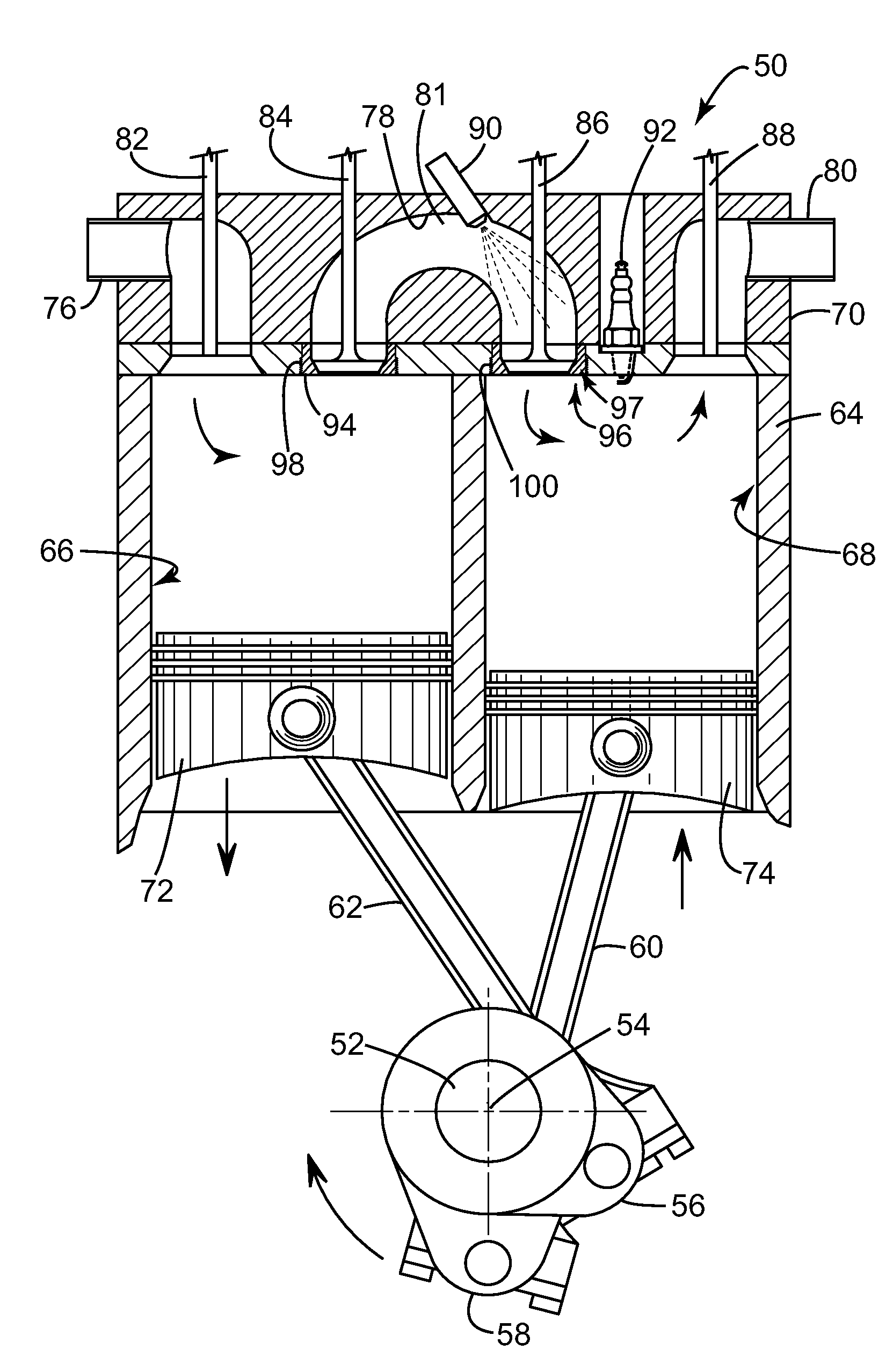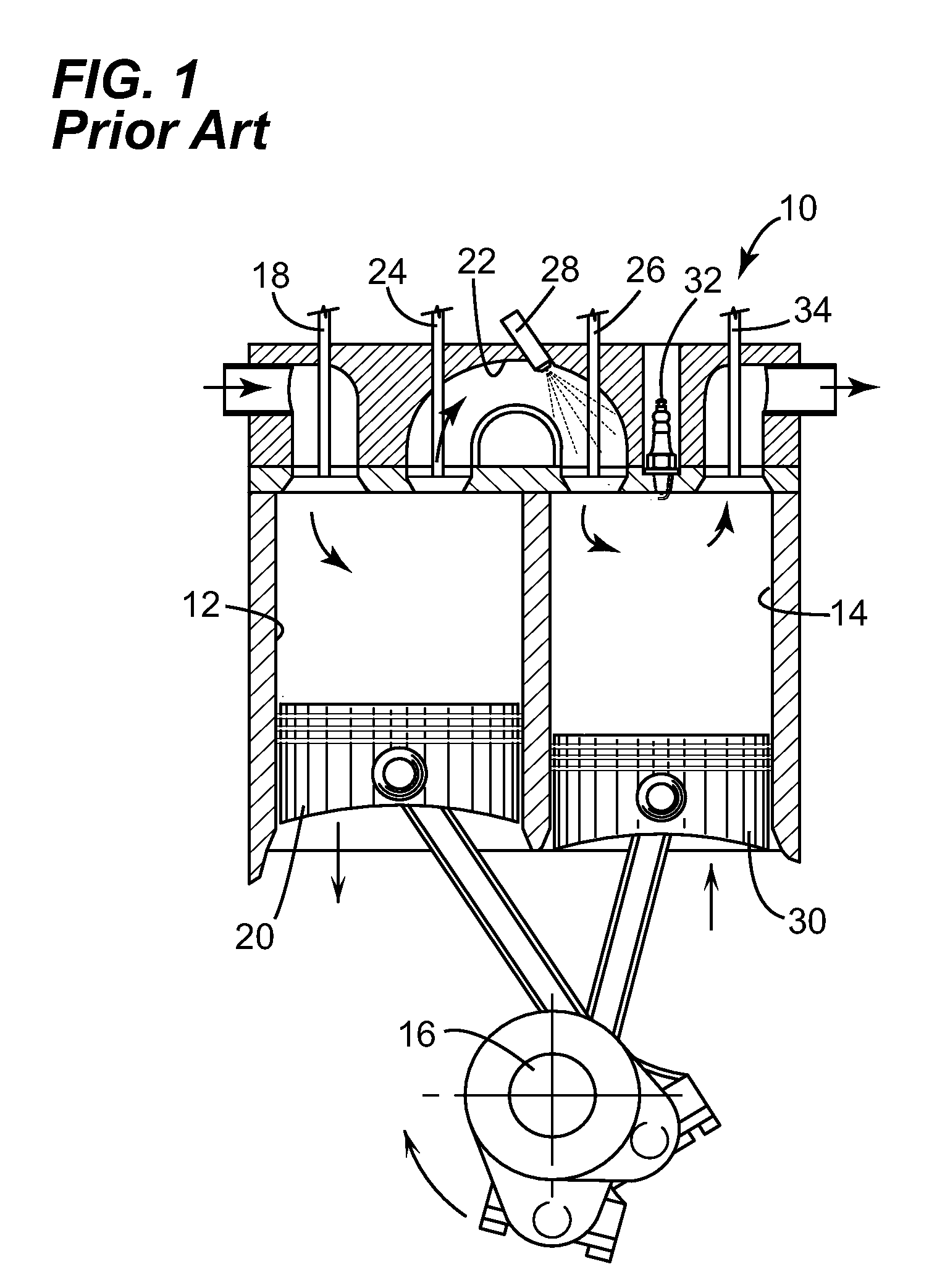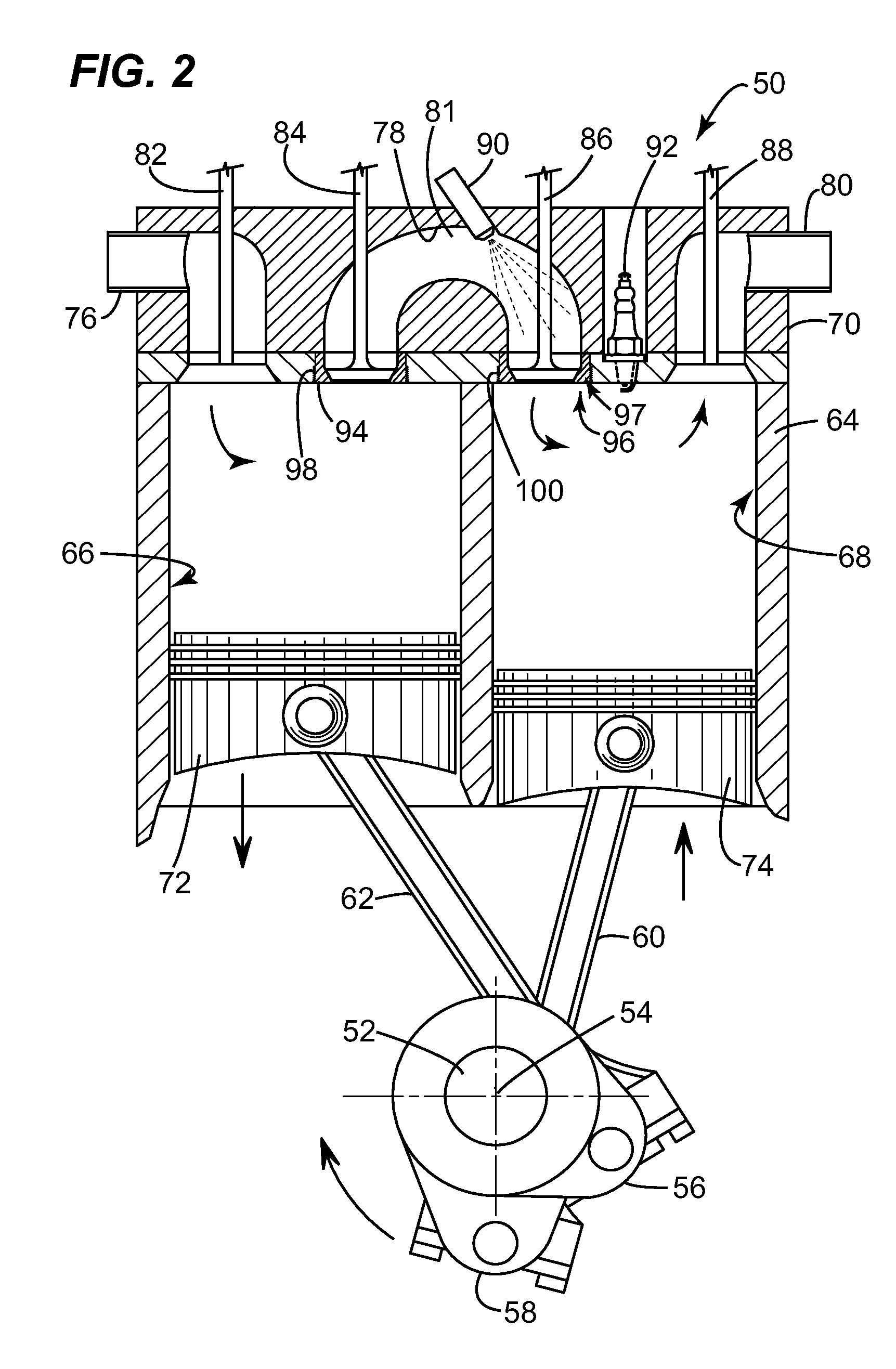Valve Seat Insert for a Split-Cycle Engine
a technology of valve seat insert and internal combustion engine, which is applied in the direction of valve arrangement, combustion engine, machine/engine, etc., can solve the problems of affecting the performance of the valve seat insert, the valve seat insert can be very frequently impacted, and the valve seat insert can be dislodged from the recess
- Summary
- Abstract
- Description
- Claims
- Application Information
AI Technical Summary
Benefits of technology
Problems solved by technology
Method used
Image
Examples
Embodiment Construction
Split-Cycle Engine
[0042]Referring now to FIG. 2 in detail, numeral 50 generally indicates a diagrammatic representation of a split-cycle engine according to the invention. Engine 50 includes a crankshaft 52 rotatable about a crankshaft axis 54 in a clockwise direction as shown in the drawing. The crankshaft 52 includes adjacent angularly displaced leading and following crank throws 56, 58, connected to connecting rods 60, 62, respectively.
[0043]Engine 50 further includes a cylinder block 64 defining a pair of adjacent cylinders, in particular a compression cylinder 66 and an expansion cylinder 68 closed by a cylinder head 70 at one end of the cylinders opposite the crankshaft 54.
[0044]A compression piston 72 is received in compression cylinder 66 and is connected to the connecting rod 62 for reciprocation of the piston between top dead center (TDC) and bottom dead center (BDC) positions. An expansion piston 74 is received in expansion cylinder 68 and is connected to the connecting r...
PUM
| Property | Measurement | Unit |
|---|---|---|
| crank angle | aaaaa | aaaaa |
| crank angle | aaaaa | aaaaa |
| velocity | aaaaa | aaaaa |
Abstract
Description
Claims
Application Information
 Login to View More
Login to View More - R&D
- Intellectual Property
- Life Sciences
- Materials
- Tech Scout
- Unparalleled Data Quality
- Higher Quality Content
- 60% Fewer Hallucinations
Browse by: Latest US Patents, China's latest patents, Technical Efficacy Thesaurus, Application Domain, Technology Topic, Popular Technical Reports.
© 2025 PatSnap. All rights reserved.Legal|Privacy policy|Modern Slavery Act Transparency Statement|Sitemap|About US| Contact US: help@patsnap.com



